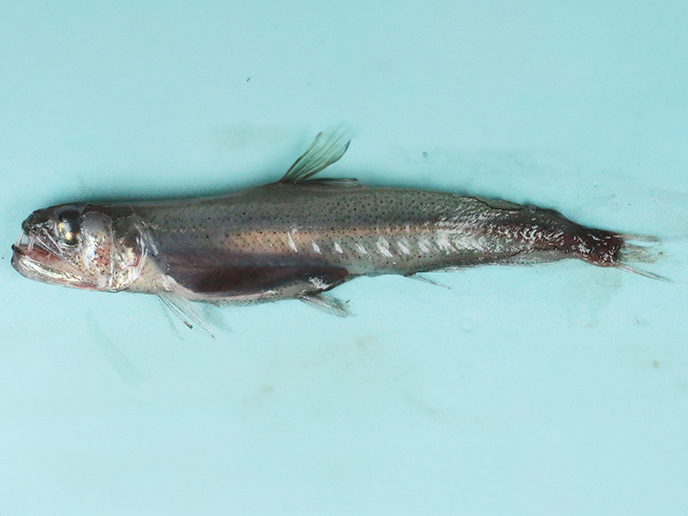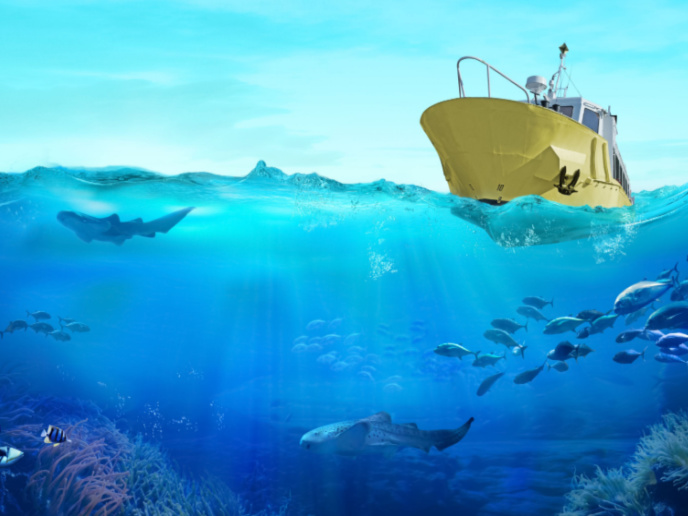Exploring food sources in the ocean twilight zone
The mesopelagic zone, often referred to as the twilight zone, lies between 200 and 1 000 metres below sea level. It is home to a remarkable diversity of small fish and other organisms, which migrate to the surface, transporting nutrients and carbon. Despite its crucial role in the oceanic ecosystem, the mesopelagic zone has remained largely unexplored.
Insights into mesopelagic organisms
The EU-funded MEESO project is a pioneering effort to explore the mesopelagic zone's vast potential. The consortium investigated the biomass and distribution of mesopelagic species in the North Atlantic Ocean, seeking to address the potential of developing sustainable fisheries. “Our goal was to see if we can find food deep below the ocean’s surface to feed the world’s growing population – without repeating the mistakes of overfishing, ecosystem destruction and biodiversity loss that we have previously made in shallower waters,” explains project coordinator Webjørn Melle. To address the low density of mesopelagic species, researchers employed acoustics, optical technology and developed new trawl technology which allowed them to map the abundance and movement patterns of these species. The generated maps highlighted areas with significant mesopelagic biomass and helped explain the spatial dynamics of mesopelagic communities. Importantly, the improved accuracy of biomass estimation ensured that exploitation will not lead to overfishing and disturbance of the delicate balance of the oceanic ecosystem.
Development of new catch methods
Mesopelagic fish species may meet growing seafood demands as promising raw material for food supplements as well as fish feed. However, the MEESO consortium had to address challenges associated with the depth that mesopelagic species live in, their small sizes and concentrations. “Making a living from catching these species is not going to be easy and requires technological innovations to improve catches and onboard conservation and/or processing,” emphasises Melle. Researchers developed and tested commercial trawls and methods for processing the catch, both at sea and on land. Investigation of processed biomass has led to the identification of biologically active compounds as well as nutritional quality and the presence of contaminants. Moreover, the development of mathematical models helped researchers predict the possible trajectories for mesopelagic resources, considering their internal dynamics and climate change.
Sustainable exploitation
With malnourishment being a global issue, seafood has great potential to contribute to food security. MEESO’s market analyses exploring potential uses of mesopelagic species have identified promising market opportunities in food production. However, policy decisions on mesopelagic fishery should not only consider the economic viability but also its impact on the wider ecosystem, and particularly the role of the mesopelagic zone in the global climate system. Considering that many mesopelagic species migrate to the ocean’s surface to feed during the night, they are implicated in pelagic trophic interactions and contribute to carbon sequestration from the ocean’s surface. Collaboration with policymakers, industry stakeholders and environmental organisations will help develop regulations and monitoring systems to ensure the responsible management of mesopelagic fisheries. Moreover, MEESO’S sister project, SUMMER, is investigating the repercussions of fishing at such great depths. Collectively, the work of the two projects is expected to lead to the development of new marine resources, while maintaining the resilience of our oceans.
Keywords
MEESO, mesopelagic, ocean, twilight zone, fishery, carbon sequestration







